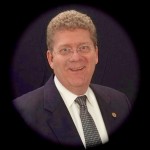 I continue to be amazed at the hidden jewels in our hospital accreditation requirements, there by design yet oftentimes not apparent. One of my newest amazements is knowledge management.
I continue to be amazed at the hidden jewels in our hospital accreditation requirements, there by design yet oftentimes not apparent. One of my newest amazements is knowledge management.
What is knowledge management (KM)? One common definition is “the process of capturing, distributing, and effectively using knowledge.” A more comprehensive definition might be “knowledge management is a discipline that promotes an integrated approach to identifying, capturing, evaluating, retrieving, and sharing all of an enterprise’s information assets. These assets may include databases, documents, policies, procedures, and previously un-captured expertise and experience in individual workers” (from Gartner Group).
KM is a concept that’s been around for about 20 years. It’s a term that has its origins in the succession planning world. In the business world, succession planning has become a strategic priority. In order to maintain a competitive level of performance, organizations must not only determine, maintain and use available knowledge, they must also work diligently to gain additional knowledge to maintain their ability to achieve their purpose and strategy.
In our healthcare world, we work feverishly every day to keep patients safe and keep abreast and compliant to the mountain of regulations, requirements that we are “subjected” to in healthcare. This isn’t an easy task in our profession. Did you know the average age of a neurosurgeon is over 60, a heart surgeon is 55 and hospital administrator is 57. These averages are actually lower than they were 5 years ago and give us a brief sigh of relief for the immediate future. The question is how will our knowledge be determined and maintained for those activities that we do in our hospitals that is not taught in school but gained through experience.
Our risk-based hospital accreditation from DNV GL gives us a structure to travel down this path. Here’s the flow of requirements from the most elementary perspective. Our accreditation details the requirements of determining and maintaining the knowledge that we need to have to perform our hospital jobs. I call this the “what” we need to know to deliver patient care and run our hospitals. This is organizational knowledge (ISO 9001:2015, clause 7.1.6). Then we need be sure that those persons working in our processes know “how” to use this knowledge to do their jobs (clinical, organizational, etc.). This is competence (clause 7.2). Again, persons working in our processes need to be aware of how their performance, good or bad, affects our ability to meet our objectives. Awareness is the “why” knowledge management (clause 7.3).
As well, our accreditation addresses KM from the what, how and why perspectives. The next two requirements from ISO ensure that we manage knowledge from a process perspective, including how we communicate (ISO 9001 clause 7.4) and how to control what we document for communication (clause 7.5). Communication runs up, down and all throughout your hospital, based on your governance and organizational structure. There are multiple venues in this structure for KM. Most visibly, KM is achieved through documentation. We have a long history (much of it checkered) of documentation in our accreditation. Using it effectively is the challenge…I’ll use the term “right sized” to describe how to best manage documentation with regard to KM.
In today’s hospital business environment, we cannot afford any slack in our knowledge management. We need every resource we can afford (and some we cannot) to ensure patient safety, consistency in our care, compliance to a plethora of rules and laws and many others, all the while focusing on our purpose and strategy. It’s a bit of a comfort and maybe even a surprise, that our accreditation gives us the platform to manage knowledge. In my next article, I’ll discuss how we can use the platform from DNV GL to optimize KM for your hospitals.
Bio:
Ted Schmidt is a Pharmacist, a Certified Enterprise Risk Manager (CERM©), and a Senior Advisor with BlueSynergy Associates, LLC. BlueSynergy Associates maximize innovation, experience and customer perspective to reduce risk and make hospitals a safer environment. He currently advises and instructs hospitals in quality, risk, safety and environmental management systems. Ted led the largest ISO 9001 implementation in healthcare at the Veterans Administration. He is a Senior Member of the American Society for Quality and a certified Lead Auditor in quality management systems by Exemplar Global. He can be reached by email at tschmidt@bluesynergyassociates.com. Follow BlueSynergy on LinkedIn and Twitter